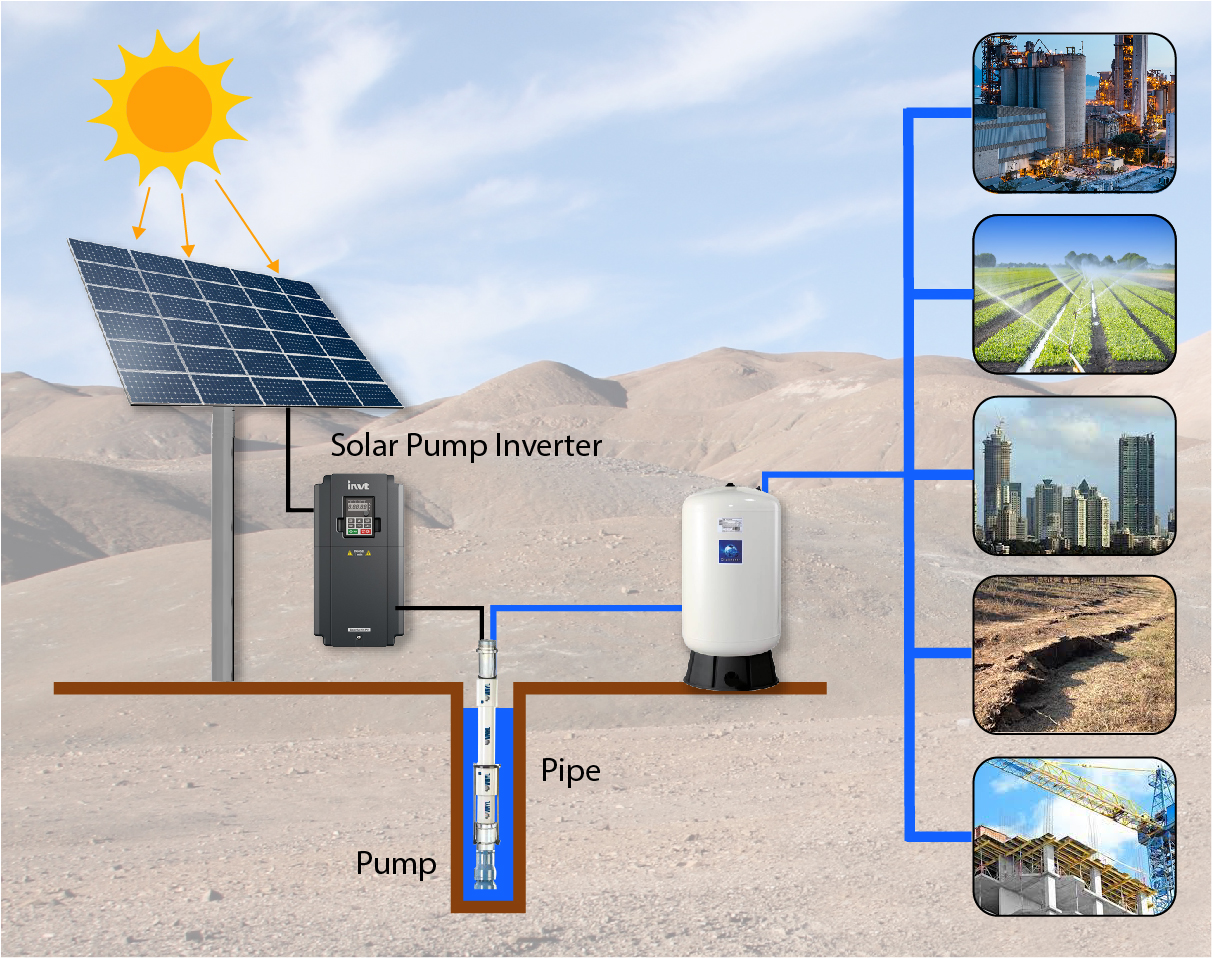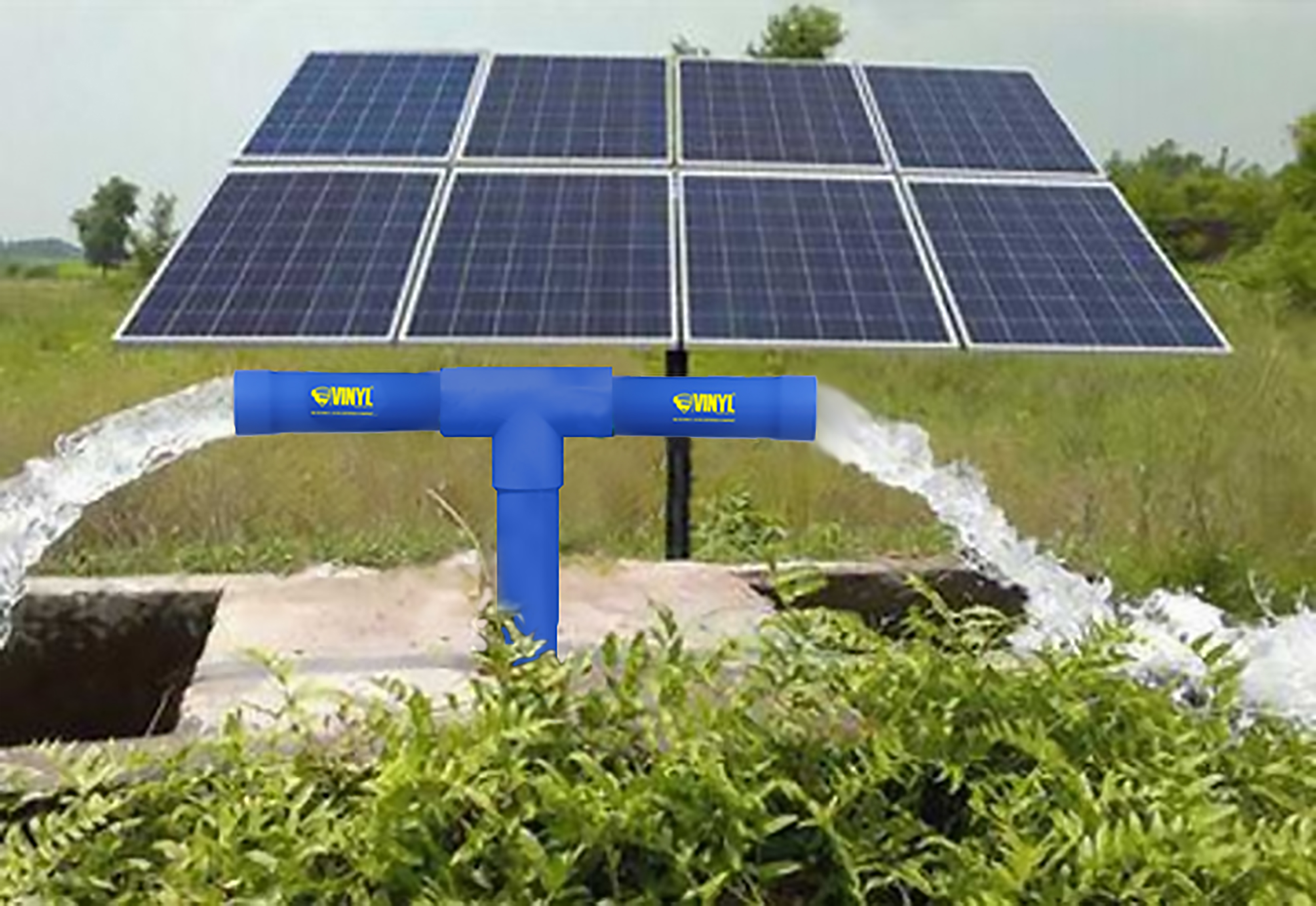

With their low energy consumption solar pumps have brought relief to many drought-ridden areas, but allowing indiscriminate extraction is having a serious effect on groundwater levels. Saumya Jain, managing director, Vinyl Pipes gives his personal view.
The world population of 7.9 billion (as of April 2021) has been growing at a rate of 1.05% (as of 2020). With only 3% of freshwater to support this increasing population, we are treading on thin ice.
The ongoing climate changes, rising incidents of natural disasters, increasing uncertainty in the rate of rainfall are not helping matters. We need technological advancements along with the implementation of sustainable practices to tackle the issue of water scarcity.
Extracting water and sustaining life, even in the remotest part of the world, is now possible thanks to solar pumps. These use green energy, have a small carbon footprint and lower energy consumption, so making water-scarce regions a thing of the past. For example, in an area in the desert of Libya where there is no electricity, solar power pumps have helped people there sustain life for many years. The same is prevalent in many parts of Africa where, thanks to solar pumps, water is accessible in regions with no access to electricity or fuel.
Solar panels nowadays are more efficient and economical than ever before. These advances have permitted a new generation of solar-powered systems. Most of these systems did not exist until recent times. The breakthrough in this technology has led to eradication of many external power sources. The sun and the solar panels supply the electricity needed to pump water from hundreds of feet underground.
Unfettered freedom Solar pumps replace fossil fuels, so reducing carbon emissions and pollution while providing a steady supply of energy to drive the pumps. Post the initial investment, the cost of operating and managing solar pumps is minimal, allowing indiscriminate pumping of water. Easy availability and low and effortless maintenance are just a few additional features that make them a preferred choice. However, this unfettered freedom may come at an expense to future generations. In India, the biggest user of groundwater, the level there decreased by 61% from 2007 to 2017*.
No doubt the adoption of these pumps has been beneficial in saving the drain on energy resources, but the fact that it does not use energy can result in their being overdriven. With this unregulated access to solar pumps, farmers are no longer limited in the amount of water they can use for their fields. The fact is that with the enormous chunk of irrigation is flood based, having unfettered access to water will inevitably result in over-exploitation of the already vulnerable groundwater resources, threatening the water resources of current as well as future populations.
Another casualty to the ease and low cost of access to solar pumps is drip irrigation. This is the water & nutrient saving irrigation system wherein water is allowed to drip slowly to the roots of plants, either from above the soil surface or buried below the surface. The goal is to place water directly into the root zone to reduce evaporation. However, the availability of water using solar pumps may not bring to light the need and benefits of drip irrigation.
Any situation with very few or no confinements and control is opened for exploitation and we must not be surprised when the same occurs with solar pumping. Depletion of groundwater is inevitable when exploration, extraction and utilisation is available to anyone and everyone at affordable costs.
The situation is aggravated by the low percentage (as low as 0.03%) of recharge water wells. We are regressing to an era where the rivers will once again be the only source of water if they too have not been destroyed with industrial pollution by then.
Appropriate guidelines To avoid a dire situation, it is vital to introduce appropriate guidelines and regulations on solar submersible pumps in water wells extracting groundwater. Governments and policymakers around the world need to come together to draft policies to monitor water extraction and recharge of water wells. The focus must be on making recharging of wells a standard practice to maintain ecological equilibrium. In the absence of these measures, there is a likelihood of dry wells in the next 20 years.
Another measure to help mitigate the problem is for wells to come part of the fixed with IoT (Internet of Things) and integrate pumps with smart water meters. This would facilitate communication and warnings guaranteeing that only a limited amount of water is extracted at a given time. It not only increases the efficiency, but also decreases the resource-draining in the water extraction process.
Recharge wells are an addition to the list of solutions. Water collected in the well would percolate into the ground and recharge shallow aquifers. However, in urban built-up spaces, percolation and recharge levels are low. Through recharge wells, rainwater is routed into shallow aquifers, which in turn enhance groundwater levels.
uPVC pipes For rainwater harvesting, one key element is the one that routes water back into the well are the pipes. Loss of water on account of breakage in the pipes can jeopardize the whole project. Hence the need to choose pipes that are reliable, sturdy and enhance the sustainability objective. uPVC pipes do not rust or corrode. The the smooth almost frictionless surface allows for more water to flow through. Some companies offer weatherproof uPVC pipes that make them fit for every terrain. Switching from GI to uPVC pipes would help reduce the maintenance costs & incidences. Quality uPVC pipes that are technologically advanced, optimized for load-bearing and leakproof can be the icing on the cake.
The solar pumps solution is a positive step forward to preserve the Earth's depleting natural resources, but it is not only the pump which must be considered, but the whole system. The frequent breakdowns in the water well & distribution system, the wastages and inconvenience, the resulting losses all need redressal.
To have water as a sustainable resource for our future generations will need appropriate regulations and utilization of technological advancements. It is important to ensure the next step is taken with caution to ensure that solar power pumps stay a boon for the industry, rather than a bane.
*From a report by the Central Ground Water Board (CGWB) of India.





